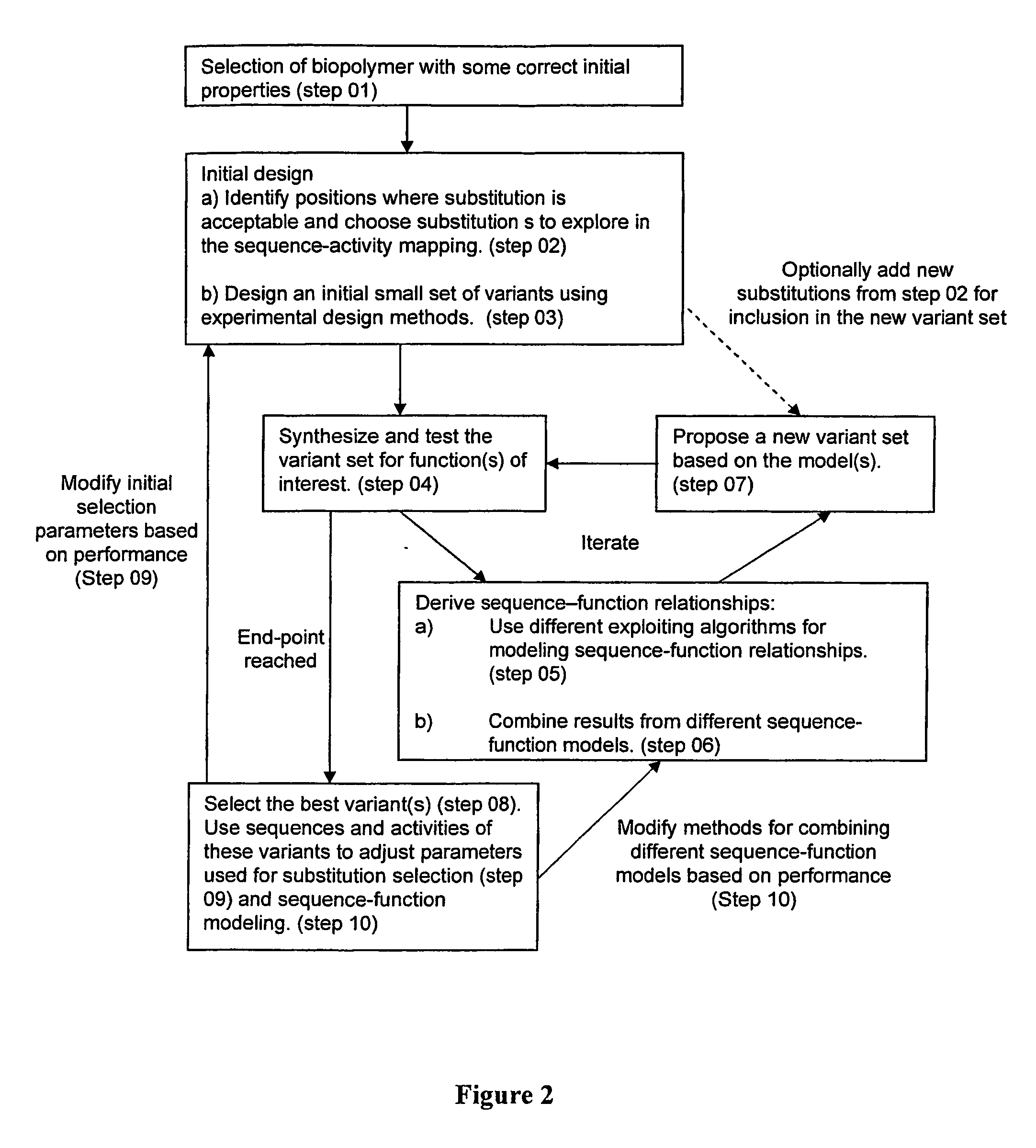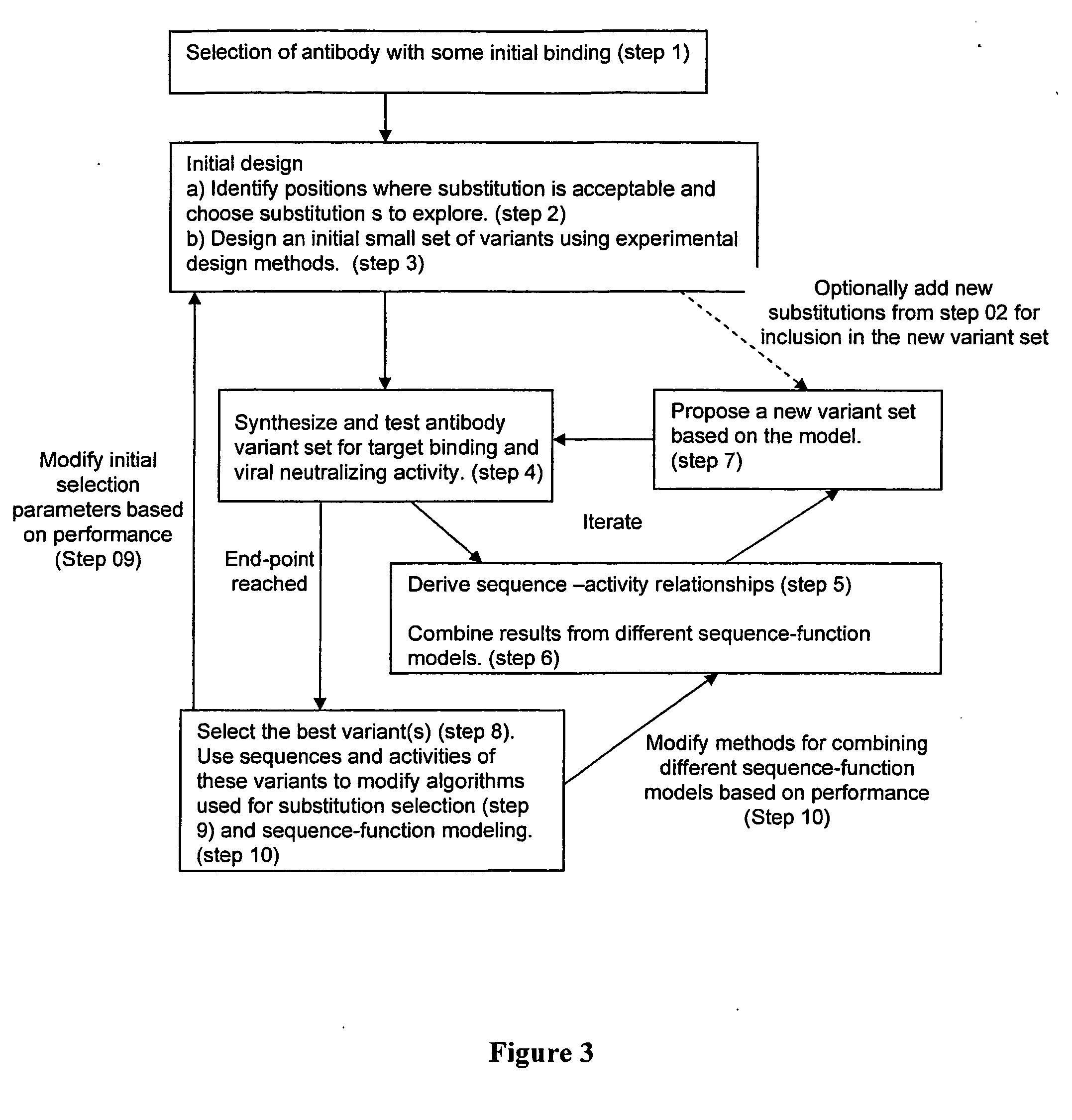Systems and methods for antibody engineering
a technology of antibody engineering and systems, applied in the field of systems and methods for antibody engineering, can solve the problems of inability to achieve the desired level of measurable property, inability to systematically screen all possible permutations, and inability to achieve synthesis or testing. the effect of maximizing the number of different combinations of pairs and reducing the total number of substitutions
- Summary
- Abstract
- Description
- Claims
- Application Information
AI Technical Summary
Benefits of technology
Problems solved by technology
Method used
Image
Examples
case-specific
[0108] case-specific data 110; and
[0109] knowledge base 108.
[0110] As illustrated in FIG. 1, computer 10 comprises case-specific data 110 and knowledge base 108. Case-specific data 110 and knowledge base 108 each independently comprise any form of data storage system including, but not limited to, a flat file, a relational database (SQL), and an on-line analytical processing (OLAP) database (MDX and / or variants thereof). In some specific embodiments, case-specific data 110 and / or knowledge base 108 is a hierarchical OLAP cube. In some specific embodiments, case-specific data 110 and / or knowledge base 108 comprises a star schema that is not stored as a cube but has dimension tables that define hierarchy. In some embodiments, case-specific data 110 and / or knowledge base 108 is respectively a single database. In other embodiments, case-specific data 110 and / or knowledge base 108 in fact comprises a plurality of databases that may or may not all be hosted by the same computer 10. In su...
PUM
 Login to View More
Login to View More Abstract
Description
Claims
Application Information
 Login to View More
Login to View More - R&D
- Intellectual Property
- Life Sciences
- Materials
- Tech Scout
- Unparalleled Data Quality
- Higher Quality Content
- 60% Fewer Hallucinations
Browse by: Latest US Patents, China's latest patents, Technical Efficacy Thesaurus, Application Domain, Technology Topic, Popular Technical Reports.
© 2025 PatSnap. All rights reserved.Legal|Privacy policy|Modern Slavery Act Transparency Statement|Sitemap|About US| Contact US: help@patsnap.com



